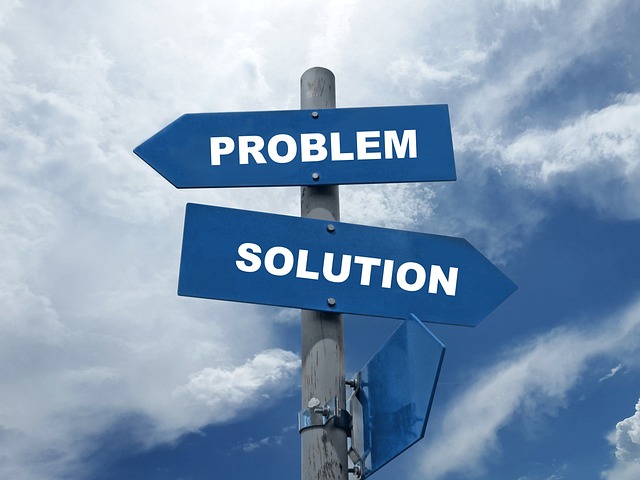
Problem solving is a vital skill that is essential for success in all areas of life, both personal and professional. The ability to identify, analyze, and find a solution to a problem is a key component of success in any field.
Problem solving is often confused with decision making and while they are very similar, there are some key differences in the processes.
Before we explore problem solving on a deeper level, let’s cover the main differences between problem solving and decision making.
The Differences Between Decision Making and Problem Solving
Decision making and problem solving are related in some ways but involve different paths of action.
Decision making is the process of choosing from multiple options presented to us. It involves identifying a problem or opportunity, generating options, evaluating the options, making a decision, and monitoring the final decision.
The goal of decision making is to select the best course of action to achieve a desired outcome.
Problem solving, on the other hand, is the process of identifying, analyzing, and finding a solution to a specific problem. It involves defining the problem at hand, generating options, evaluating options, making a decision, and monitoring the solution.
The goal of problem solving is to find a solution to a specific problem.
To summarize, decision making is focused on choosing the best option among multiple alternatives, while problem solving is focused on finding a solution to a specific problem.
Both processes involve similar steps and can be influenced by similar factors, such as biases and cognitive limitations, but they have different goals and applications.
Now let’s explore the problem-solving process, the factors that influence problem solving, and the strategies for effective problem solving.
The Problem-Solving Process
The problem-solving process typically involves several steps:
Step 1: Identify the Problem
The first step in solving a problem is to identify it clearly and specifically. This involves gathering information and understanding the nature of the problem. It’s important to identify the root cause of the problem, so that the solution addresses the underlying issue and not just the symptoms.
Step 2: Generate Options
Once the problem has been identified, the next step is to generate possible solutions or courses of action. This step involves brainstorming and thinking creatively. It’s important to consider a wide range of options and to weigh the pros and cons of each one.
Step 3: Evaluate the Options
The third step is to evaluate the options that have been generated. This involves assessing the potential consequences of each option and determining which one is the best choice based on the goals and objectives that have been identified.
It’s important to compare the options against the criteria established in the beginning and to consider the long-term consequences of each decision.
Step 4: Decide on a Final Solution
The fourth step is to make a decision and choose a course of action. This is the point at which a decision is implemented and the solution to the problem is put into action.
Step 5: Monitor and Evaluate the Solution
The final step is to monitor and evaluate the decision. This involves reviewing the outcomes of the decision and determining whether the objectives were met. If not, the process should start again.
Factors that Influence Problem Solving
There are several factors that can influence problem solving, including biases, emotions, and cognitive limitations. Biases refer to unconscious or preconceived notions that can influence our judgment.
Emotions can also play a role in problem solving and can lead to irrational or impulsive decisions. Cognitive limitations refer to the limitations of the human mind, such as memory, attention, and problem-solving abilities, which can also affect problem solving.
Strategies for Effective Problem Solving
To solve problems effectively, it’s important to be aware of these following factors and to take steps to minimize their impact:
Critical Thinking
Critical thinking is the process of objectively analyzing information and using evidence to make well-reasoned decisions. It involves evaluating information, considering different perspectives, and identifying any biases or assumptions that may be present.
By using critical thinking, individuals can overcome cognitive limitations and biases that might otherwise prevent them from finding a solution.
Decision Analysis
Decision analysis is a structured approach to problem solving that involves identifying and evaluating different options and determining the best course of action.
It typically involves identifying the problem, generating options, evaluating the options, and making a decision. By using decision analysis, individuals can systematically evaluate different options and make well-informed decisions.
Involving Key People
Involving the right people in the process is an important strategy for effective problem solving. This means involving stakeholders, experts, or others who have a vested interest in the outcome.
Involving others can help to provide additional perspectives and to increase the chances of finding a solution.
By involving the right people in the process, individuals can gain new insights and ideas, and can ensure that all relevant information is considered when making a decision.
Getting the right people involved can also help to build buy-in and support for the chosen solution, which can increase its chances of success.
Consider The Consequences
Decisions and changes can have long-term consequences, which need to be taken into consideration when implementing any change. This means considering not only the immediate effects of a decision, but also the potential long-term implications.
This can help to prevent short-sighted decisions and to ensure that the solution will be beneficial in the long-term.
Be Prepared to Adapt or Change
Solutions to problems don’t always work, so it’s important to be open to adapting or changing the course of action if necessary.
This means being willing to revisit the problem and to make adjustments if the circumstances change or if the solution is not working as expected.
Problem solving is a critical skill that humans need to possess if they want to achieve success in either a personal or professional capacity.
By understanding the problem-solving process and the strategies for effective problem solving, we can improve our ability to identify, analyze, and find solutions to problems, and ultimately achieve success in all areas of life.
Master this One CRUCIAL Skill to Achieve Success in Any Endeavor!
It doesn’t matter if you’re trying to build a business, lose weight or achieve any other goal you’ve set your eyes on…
There’s one skill that you’ll absolutely need to master. It’ll be a tough and painful journey to become adept at it, but once you’re able to execute, success will be inevitable in any field you immerse yourself into.
So what’s that skill, you ask?
It’s impulse control. Some people call it delayed gratification or sacrifice.
Whatever term is used – all it basically means is that you are in control of your feelings and emotions.
-
How a lack of impulse control sabotages you
Let’s assume you’re on a diet and you need to eat clean…
What will you do if you suddenly have a craving to gulp down the can of ice-cool root beer that’s sitting comfortably in your fridge – and winking at you every time you open the refrigerator door?
Will you give in to temptation and guzzle down the entire can without giving it a second thought?
Or will you exercise impulse control and shut the door as you flee to another room in the house?
If you’re able to say no to the temptation, you’ll be on your way to your weight loss goal. If you lack impulse control and give in, you’ll be placing obstacles in your weight loss journey and impeding your own progress.
-
Impulse control affects different areas of your life
If you’re trying to build your own business, you may be tempted to take the day off and have fun instead of working.
If you’re married but notice an attractive co-worker who’s giving you the eye, you may be tempted to flirt with her and land yourself in hot soup.
If you’re on a tight budget, you may feel the urge to relieve stress by buying items you don’t need and putting more charges on your credit card.
All these actions are a result of a lack of impulse control. Procrastination, going into debt, straying in your marriage, etc. are all signs that you want a quick hit of dopamine rather than wait for a slow payout.
Here’s the irony…
If you don’t sacrifice for what you want, what you want becomes the sacrifice.
Either way, you’re sacrificing something.
Would you rather sacrifice immediate short-term gratification and achieve your goals… or will you keep giving in to the temptations and old habits which are holding you down?
What’s really unfortunate is that short-term gratification will only keep you happy for a very short time… but delayed gratification will lead to long-term happiness.
The joy you gain from eating or drinking what you shouldn’t will only last you for a few minutes. But losing weight and achieving the body of your dreams will make you happy for a long time. Nothing tastes as good as being lean feels.
The same applies to most worthy goals. Your short-term sacrifices which seem painful in the moment will lead to long-term rewards that give you true long-lasting happiness.
-
How to develop impulse control
The first step will be to change your environment. That may mean eliminating all food temptations in your house, if you’re trying to get in shape.
If you’re in debt, it may mean cutting up your credit cards and creating a strict budget that you’ll follow closely.
Whatever your situation may be, distancing yourself from temptations is the first step. This will prevent things from being harder than they need to be. Do not rely on willpower. Almost always, it’ll fail you sooner or later.
Once your environment is conducive to helping you control your negative habits, you’ll want to aim for small 1 percent improvements daily.
For example, if you have a social media addiction, you may wish to install a screen time app to track how long you’re on your phone. Then aim to cut down your time spent on your phone (using social media) by about 10 minutes a day.
In a week or so, you’ll only be on social media for a few minutes a day. You may choose to either minimize your usage or eliminate the habit entirely.
What matters most is that you’re mindful of how you think and act. This is the most important step when it comes to exercising impulse control.
Ask yourself if what you’re doing will help you or hurt you. Then decide from there. It won’t be easy at the start… but the more you practice impulse control, the better you’ll get at it.
Once you’re in control of your thoughts and actions, you’ll act in congruence with your goals and achieve them easily and in record time.
Personal Finance
Managing personal finance is essential for achieving financial stability and security. It involves understanding and managing one’s income, expenses, savings, and investments in order to achieve financial goals and to plan for the future.
Without taking control of our personal financial situation, we cannot maintain a decent quality of life and we cannot grow.
Let’s discuss the importance of managing personal finance, the key elements of personal finance management, and strategies for effectively managing personal finances.
The Importance of Managing Personal Finance
The importance of managing personal finance cannot be overstated. It is essential for achieving financial stability and security, as well as for planning for the future.
Good personal finance management can help to ensure that one has enough money to meet current expenses, to save for future goals, and to plan for unexpected expenses or emergencies.
Stress and anxiety are a direct result of poor personal financial management, which is why it is important to managing personal finance effectively.
Key Elements of Personal Finance Management
The key elements of personal finance management include understanding income, expenses, savings, and investments.
Understanding income is essential for creating a budget and for determining how much money is available to be saved or invested. Understanding expenses is essential for creating a budget and for determining how much money can be saved or invested.
Savings is essential for achieving financial goals and for planning for the future. Investments are essential for growing wealth and for achieving financial goals.
Strategies for Effectively Managing Personal Finance
One of the most important strategies for effectively managing personal finances is to create a budget. A budget is a plan that outlines how much money is coming in and going out.
Sticking to a budget is essential for understanding where money is being spent and for determining how much money can be saved or invested. A budget also helps to identify areas where expenses can be reduced or eliminated.
Creating a consistent habit of saving money is another common strategy for managing personal finance. It’s important to have a plan for saving money, whether it’s for a short-term or a long-term goal. Setting a specific savings goal, such as a down payment on a house, or an emergency fund, can help to ensure that money is being saved.
While slightly riskier, but still essential to truly get ahead in life, is investing. Investing can be a great way to grow wealth and to achieve financial goals.
It’s important to educate oneself about different types of investments, the risks involved, and the potential returns. Before investing it is important to have a plan and to speak to a professional for accurate advice.
Finally, making a plan to reduce debt is a sound strategy to better manage your personal finance. High levels of debt can be a significant obstacle to achieving financial goals and can lead to financial stress and anxiety.
It’s important to have a plan for reducing debt, such as paying off credit cards or taking out a consolidation loan. This may involve creating a budget, increasing income, or cutting expenses.
When creating a debt reduction plan, it is important to seek the right professional advice. Reducing debt may involve actions such as paying off high-interest debt first, like credit card debt, as it can have a significant impact on overall debt levels.
Managing personal finance also involves protecting oneself from financial risks. This includes having adequate insurance, such as health, life, and property insurance, to protect against unexpected events. Additionally, it’s important to have an emergency fund to cover unexpected expenses or to provide a financial cushion in case of job loss or other financial setbacks.
Managing personal finances effectively and living a comfortable life, without struggling to pay the bills or put food on the table, are great ways to reduce stress and anxiety.
The thought of managing one’s income, expenses, savings, and investments in order to achieve financial goals and to plan for the future might seem daunting at first, but there is an abundance of resources available to help.





